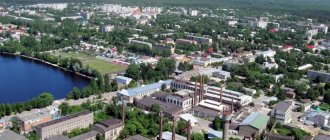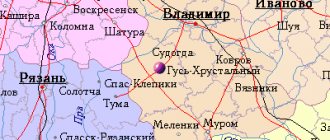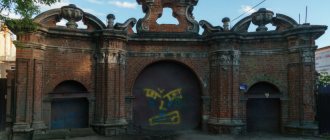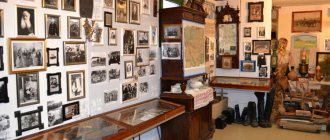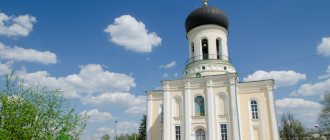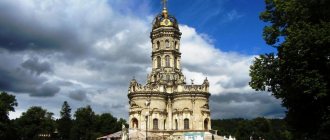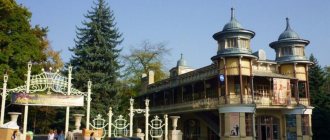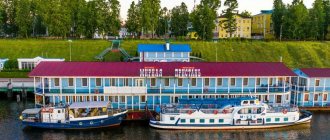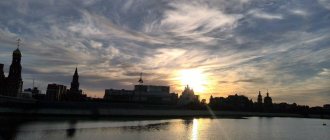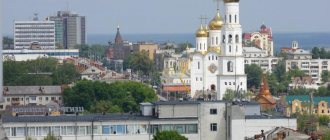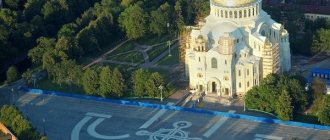Next to the shrines of the Vladimir land, among the forests of the mysterious Meshchera, there is a city with a poetic name - Gus-Khrustalny. The products of his masters have been known in the world since the 18th century: Russian electronics and nuclear energy, space industry and biochemistry, laser technologies, mechanical engineering and metallurgy were necessary without the participation of factories, factories, and workshops of Gus-Khrustalny. And yet, there is one main pride of this city in the Russian outback - pride in crystal creativity. The most advanced method of continuous crystal melting was created here. Nowhere in Russia was such pure glass produced.
Today in the city, not everything is as rosy as before: the production areas of the main city-forming enterprise “Gusevsky Glass Factory named after. Dzerzhinsky" are practically not used. An even sadder fate befell the Crystal Factory. It was completely stopped in 2011. Gusev crystal is now very rare in Gus-Khrustalny. But as they say, “He who seeks will always find!”
Like the light of a distant lightning, Above the blue early in June, the wondrous city of Gus-Khrustalny will sparkle for me like a diamond.
Victor Poltoratsky
Tourists often visit Gus-Khrustalny, not only from Russia, but also from all over the world. Some limit themselves to visiting the crystal museum, others book a city tour to learn about the history of this unique city and see all its attractions.
Religious sites
This beautiful ancient city has quite a lot of interesting places that every tourist should definitely see. These include religious sites - temples, cathedrals, chapels. There are not very many of them in Gus-Khrustalny, but each of them is of historical value as a particularly revered shrine and architectural monument.
St. George's Cathedral
This cathedral was built at the beginning of the 20th century under the leadership of architect L.N. Benoit. The highlight of the cathedral building is the large number of carved decorations - white lace on a red brick background. Of particular note is the main entrance to the building. The high porch under the carved arch gives the cathedral a solemn appearance.
All the painting inside the church belongs to the great artist V.M. Vasnetsov. One of his works is amazing. This is a huge image (7x7 m) on the theme of “The Last Judgment”. Also one of the distinguishing features of the interior are the majestic columns made of black labradorite.
During Soviet times, the cathedral, like most churches, was tried to be destroyed. The bell tower, upper floors and dome were completely destroyed, and the library was located in the main building. Later, the temple was partially restored; currently it does not function for its intended purpose - it houses the Crystal Museum.
Address: st. Kalinina, 2a.
Operating mode:
- Tuesday, Wednesday from 10:00 to 16:00;
- Thursday to Sunday from 10:00 to 17:00;
- Monday is a day off.
Holy Trinity Church
This is one of the first temples in the city. It appeared at the beginning of the 19th century near the crystal factory. 30 years after its construction, it was significantly expanded, and it received its current name.
The temple functioned until 1936, when it was completely destroyed. During wartime, the renovated church building housed the workshops of the glass school. Somewhat later, a fire brigade post was installed in it.
The temple was returned to the church, and restoration began only in 1989. Its external and internal decoration is quite ascetic. Currently, it has been completely restored and is open to believers and tourists. There is also a seminary and Sunday school at the temple.
Address: st. Luxemburgskaya, 3.
Opening hours: every day from 7:00 to 19:00.
Chapel of St. Barbara
The oldest chapel in the city, built at the end of the 19th century and consecrated in honor of the appearance of the icon of St. Barbara . It was built near a spring, the water from which the townspeople used only for drinking and cooking. The chapel is still considered one of the most important shrines of Gus-Khrustalny.
During Soviet times, the chapel building housed a kitchen. After a severe fire in 1950, it was used as a funeral parlour and, later, a garage. It was decided to undertake restoration only in 1991, which was carried out entirely through the efforts of parishioners.
Now the chapel looks quite elegant. The red brick building is decorated with snow-white carved patterns. The walls of the chapel inside are painted with paintings of religious motifs. One of its main assets are ancient icons donated by parishioners.
Address: st. 2nd People's.
Opening hours: every day from 9:00 to 15:00.
Chapel of St. Barbara
Address: Lagernaya str., 1
The chapel was erected in the place where the miraculous appearance of the icon of Barbara (the Great Martyr) took place in 1765. At first the chapel was wooden, then it became stone. It's sad that the name of the architect remained a secret.
In the 1930s, the chapel was turned into an industrial catering unit where sweets were made. An interesting fact is that fires started in the building almost every year, and certainly before the patronal feast day. It was later turned into a garage.
The revival began after 1991, and in 1995 a cross was raised to the roof of the chapel.
Museums
The sights of Gus-Khrustalny are not only ancient churches, but also one-of-a-kind museums. The city has museums of different types - historical, artistic and architectural.
Crystal Museum named after. Maltseva
This museum, as already written above, is located in the premises of St. George's Cathedral. It presents quite a lot of exhibitions, and the number of exhibits is colossal - about 2000 copies. The guides will tell you about the history of crystal and the birth of the city.
The museum constantly plays classical music, which only enhances the impression of the magnificence presented. The most unusual exhibition is “Hymn to Glass”. In addition, here you can admire the very first products of the Crystal Factory made of engraved potash glass, lead crystal and much more.
Address: st. Kalinina, 2a.
Operating mode:
- Tuesday, Wednesday from 10:00 to 16:00;
- Thursday to Sunday from 10:00 to 17:00;
- Monday is a day off.
Historical and Art Museum
The museum building is one of the architectural monuments of the city. Before the revolution, it housed a men's school. In addition to exhibitions telling about the history of the region and the creation of Gus-Khrustalny, the museum hosts festivals, conferences and celebrates Orthodox holidays.
The exhibition “Stone Chronicle of Meshchera” presents several sections:
- “River of Time” presents archaeological finds dating back to ancient times;
- “Gussky Pogost” describes the history of the development of merchants in the region and the city, talks about the foundation of trade and trade routes;
- “The Goose in the Legends and Tales of the Peoples of Eurasia” is dedicated to the tales of the goose and the beliefs of indigenous peoples associated with it;
- “Glade of Fairy Tales” offers visitors sculptures by O. Tsepkov on a fairy tale theme;
- “The Nature of Meshchera” talks about the flora and fauna of the region and about rare species of plants and animals listed in the “Red Book”.
Address: st. Kalinina, 2.
Operating mode:
- from Monday to Saturday from 10:00 to 18:00
- Sunday is a day off.
Ticket prices:
- full ticket – 40 rubles;
- pension/school – 20 rubles;
- Free admission for preschoolers and disabled people.
Meshchera National Park
The huge natural complex offers not only various exhibitions, but also entertainment for lovers of active recreation. Here you can learn the history of the development of the region, become immersed in Russian culture, and admire the amazing nature. The park's services are designed for both group and single tourism. There are also all conditions for a family holiday.
On the territory of the park there are:
- “Museum of Nature”, which presents to visitors more than 100 exhibitions of rare animals and birds of the region;
- “Local history complex”, offering to plunge into the way of life and culture of Russian people;
- "Ecological trails", containing exciting routes throughout the park;
- “Matrenin’s Dvor” is an exhibition in the house that belonged to M. Zakharova, where Solzhenitsyn lived.
In addition, there are 2 areas on the territory of the complex - for recreation and demonstration.
Address : st. International, 111.
Operating mode:
- Monday to Friday from 8:00 to 17:00;
- Saturday/Sunday closed.
- lunch from 12:00 to 13:00.
Ticket prices:
- museums and exhibitions – 30 rubles, discount – 25 rubles;
- ecological trails – 60 rubles, preferential – 50 rubles;
- excursions around the park - 300 rubles, discounted rates - 200 rubles.
Glass market
Even if you have already bought crystal from a factory, still visit the local glass market. On it you will find crystal, glass, ceramic and clay products from different countries. Among the producers are other cities in Russia, Ukraine, Belarus, and Turkey.
Glass market
You can buy a cute souvenir as a gift or as a keepsake, or you can buy something useful in everyday life (for example, chandeliers, vases, sets).
- Where is it: st. Rudnitskaya, 10.
- Opening hours: daily from 6:00 to 13:00.
- Cost of visiting: free.
Sculptures and monuments
Some of the main attractions of Gus-Khrustalny are monuments to great people, symbols of the city and significant events. Almost all of them are located in the center.
Monument to Akim Vasilyevich Maltsov
This monument is one of the main ones in the city.
It was installed in honor of the 250th anniversary of the city, its founding father, merchant Maltsov. The merchant introduced the latest technologies into the crystal factory founded by his father, which greatly facilitated the work of its workers.
The quality of the product increased significantly as a result of these changes, and it was unrivaled in its kind.
Address: st. Kalinina, 2.
Goose Monument
A small monument to the city's symbol depicts a goose about to take off. It is located exactly in the middle of a small flower bed. There are no sophisticated elements on the monument - it is quite simple and laconic. Exactly the same goose is depicted on the coat of arms of Gus-Khrustalny.
Address: st. Rudnitskaya, 2.
Monument to the Victims of Political Repression
The modest monument is made of black marble and consists of two parts. The first depicts the exhausted faces of people, entangled in barbed wire, and a burning candle. On the second is carved the inscription “The memory of them will remain as long as we remain human.”
Address: st. Kalinina, 15.
Monument to the liquidators of the consequences of the accident at the Chernobyl nuclear power plant
This monument is installed right in the city center, in a small cozy square. More than 1 million people participated in eliminating the consequences of the accident at the notorious nuclear power plant, many of them are no longer alive, many remain disabled.
The monument was erected as a reminder of the feat of the townspeople who participated in the liquidation. A sleek black slab sits on a piece of raw granite. Wreaths and flowers were laid at the foot of the monument.
Address: st. Kalinina.
Shopping arcades
The shopping arcades are considered architectural monuments of the 19th century. They were built in 1853 to serve the workers of the plant and other factories. The building is spacious and consists of two floors. Columns and balconies are installed as decoration.
Shopping arcades
The work of the rows ended in the 19th century, and began again only at the beginning of the 21st century. Today the building houses various shops.
- Where is it: Freedom Square.
- Cost of visiting: free.
Parks and squares
The sights of Gus-Khrustalny are quite unusual, as is the city itself. These can easily include parks, of which there are only 2, but they are quite extensive and well-groomed.
Square in front of the Crystal Museum
In this park with smooth paths leading to the museum, you can enjoy not only nature, but also relax in silence on benches or in gazebos. There are no obstacles for those who want to walk around the square, as it is open at any time of the year. In addition, various events are often held here, organized by museum employees.
Address: st. Kalinina, 2a.
Skazka Park
The park is designed in the style of a fairytale forest. Throughout its territory there are sculptures of fairy-tale characters carved from wood. The park has a small lake where you can swim on a hot day, recreation areas and playgrounds. Currently, the park is expanding, and the city administration is actively engaged in its improvement.
Address: st. Mayakovsky.
TEMPLE OF THE LIFE-GIVING TRINITY
This church is located near the village of Erleks and is one of the largest and most beautiful in the vicinity of Gus-Khrustalny. It was built in 1825-1852 in the strict style of late classicism. The bell tower was built later than the main temple and is visually very different from it - it is already an eclectic style, with more intricate decorations on the facade.
Address: Erleks village, Gus-Khrustalny district. Coordinates: 55.60114, 40.38904.
Interesting and unusual places
Gus-Khrustalny is rightfully considered the capital of Russian crystal, so all the interesting places that a tourist should visit are connected with it. In addition, trade is actively developed in the city, since this is where you can buy the cheapest glass and crystal products.
Crystal market
At this outlet you can buy beautiful items made of glass, crystal, clay and ceramics.
In addition to tableware, both locally produced and imported, the following are presented here:
- various souvenirs;
- original chandeliers;
- interior decor items and much more.
Shopping arcades
The rows were built in the mid-19th century. downtown. They have retained their original appearance and purpose to this day.
In the Gusya-Khrustalny shopping arcade you can choose excellent crystal souvenirs of various shapes
Here you can not only admire the ancient architecture, but also buy various souvenirs or taste traditional cuisine in the Maltsov restaurant located here.
City Lake
On the lake you can not only swim and sunbathe on a well-equipped beach, but also go boating. There is a boat rental station next to the beach. There is a fairly large park around the lake, where you can sit on benches in the summer heat in the shade of trees and admire the crystal surface of the reservoir.
Entertaining
Travelers with children should definitely visit this place.
There is everything for a great family holiday:
- 2 cinemas;
- game Zone;
- playgrounds;
- karaoke;
- pizzerias and much more.
Stone chronicle of Meshchera
This is a permanent exhibition in the historical museum. Here you can not only view exhibitions telling about the nature of the region, but also admire ancient objects found during excavations. In addition, the museum hosts interactive excursions dedicated to the myths and legends of Meshchera.
Story
Start of glass production
The village (Gusskaya volost) is mentioned in documents of the 17th century. In 1756, the Maltsov merchants in the Shivorovo tract on the Gus River began the construction of a glass factory, which gave rise to the famous brand Gusevskaya Crystal Factory and, in fact, the name of the city itself, “Gus-Crystal”. The reason for the construction is the need to withdraw their enterprises from the Moscow region, where the government banned glass factories due to deforestation. In particular, artisans from near Mozhaisk are transported to Gus. In 1759 Akim Maltsov launched a second plant - Nikulinsky, which consisted of two gutters.
After Akim's death, his widow, Maria Vasilievna Maltsova, takes over. Over 20 years of management, Maria Maltsova founded 4 more glass factories and 1 cement factory. According to her will, Maria Vasilievna transferred all the glass production to her youngest son Ivan, allocating only a monetary reward to the eldest, Sergei. A few years later, Sergei Akimovich buys out all Gusev’s enterprises from his younger brother and establishes new factories nearby. In 1823, after the death of Sergei Maltsov, the “Maltsov glass district”, uniting factories in the Vladimir, Ryazan, Oryol, Kaluga and Smolensk provinces, was united again under the leadership of Ivan Akimovich.
Ivan Maltsov
In 1831, Ivan Sergeevich Maltsov (1807-1880), who returned from abroad, went to Gus and began to engage in factory affairs. Under him, the Gusev Crystal Factory received a kind of rebirth. Maltsov, who often visited abroad, began to introduce at his enterprises all the technical innovations that appeared in Europe. He also borrowed new products from other Russian glass factories that were in demand on the market. At the suggestion of craftsmen, a “sample chamber” was created under him, where products that were the best in beauty and complexity of design were stored. Soon the Gusev plant was transferred to the production of expensive crystal glassware. Now the plant could rightfully be called crystal. The best glassmakers were transferred here from other factories. In Hus, popular products were made from plain and colored glass with floral painting and gilding. Crystal products were famous for their diamond (diamond) cut and were decorated with engraving. Vases were produced from two- and three-layer crystal with etching. Already at the II All-Russian Exhibition of Manufactured Products, held in 1831 in Moscow, Gusev's crystal was about. Two years later, Gusev’s products won a “big gold medal” at the St. Petersburg exhibition. Two years later, Maltsov’s products entered the world market.
In 1835, Maltsov, while abroad in the retinue of Nicholas I, studied the work of Czech factories that produced Bohemian glass, purchased production samples, and acquired manufacturing recipes. Soon the Gusev plant mastered the technology of manufacturing Bohemian products.
In 1844, construction of a paper spinning mill began in Gus, which was launched in 1847. In 1865, a paper and weaving factory began operating, and in 1888, a spinning mill. From the very first steps, the paper spinning mill was distinguished by its high quality yarn. Cotton was purchased in America, all equipment was English. At the All-Russian Exhibition of 1870, Gusev's cotton products were awarded a silver medal, and at an exhibition in 1882 - a gold medal.
Late XIX - early XX centuries.
In 1880 Ivan Maltsov died. After his death, the Gusevsky Crystal Factory passed to one of his nephews, Yuri Stepanovich Nechaev-Maltsov (1834-1913). During this period, the Gusev Crystal Factory produced about 1/4 of the volume of glass products in the Vladimir province; in 1884 it employed 744 people. During this period, 3.5 thousand people worked at the paper spinning mill. At the beginning of the 20th century, Gus-Khrustalny became a large factory village. On the eve of the First World War, 12 thousand people lived in it.
In 1914, according to the will of the childless Yu. S. Nechaev-Maltsov, his fortune passed to his relative, Count P. N. Ignatiev. In 1918 the enterprise was nationalized. During the Soviet period, products were presented more than once at prestigious international exhibitions.
Soviet period
The 1917 revolution changed the way of life of the people of that time. By decree of the NKVD of February 25, 1919, Gus-Maltsevsky received city status. However, due to difficult material conditions, the lack of administrative buildings and any public utilities, housing, and funds to pay salaries to the city staff, Gus-Maltsevsky was unable to cope with city expenses and was subsequently transferred to the position of a workers’ village.
By decree of the All-Russian Central Executive Committee of August 23, 1926, Gusevsky district was formed. Gus-Maltsevsky was renamed Gus-Khrustalny and became a district center. There were 26 fairly large industrial enterprises operating on the territory of the county. With the liquidation of provinces and districts, the Gusevsky district of the Vladimir district of the Ivanovo Industrial Region was organized. The general plan and layout of the village was developed in 1927 by the architect-urban planner A.P. Ivanitsky. The village of Gus-Khrustalny became a regional center on June 10, 1929.
By decree of the All-Russian Central Executive Committee of November 20, 1931, the working village of Gus-Khrustalny was transformed into a city. On March 11, 1936 it became part of the Ivanovo region.
The Gusev residents made a great contribution during the Great Patriotic War. There were 5 hospitals in the city. In the fall of 1941, a defense committee was created in the city, and a fighter battalion of the people's militia operated. In a short time, production was rebuilt on a military scale. At that time, the Crystal Factory produced thermoses, flasks, flasks, thermometers, etc.
On August 14, 1944, Gus-Khrustalny became part of the newly formed Vladimir region.
Gus-Khrustalny was awarded the Order of the Badge of Honor (1981) for his success in the development of the domestic glass industry and contribution to the development of the national economy. In the 70s, an embankment was built and roads were paved. Industry is growing rapidly. During the Soviet period, large industries operated in the city, such as the Crystal Plant, the Textile Plant, the Experimental Plant, and the Glass Factory named after. Dzerzhinsky, Quartz Factory, Shveymash, Reinforcement Factory, the Institute of Glass, Creolin Factory, Meat Processing Plant, Dairy Processing Plant, Bakery. Clubs and schools are being built, children's country camps are opening.
Post-Soviet period
The population of Gus-Khrustalny is more than 60 thousand people. Gusev Crystal Factory is the largest domestic enterprise producing art glass and crystal. In 1996, the city of Gus-Khrustalny was awarded the international prize “Golden Mercury” for preserving the historical and architectural appearance of the city. The Quartz Factory, the Textile Factory, Shweimash cease to exist, the Institute of Glass, the Crystal Factory, the Meat Processing Plant disappear... The rest of the production is split into pieces. Some are pulled apart, some continue to work somehow.
At the end of 2010, the entrepreneurs of Gus-Khrustalny turned to the head of government, Vladimir Putin, with a letter about the dominance of crime in their city: “More than three dozen arson, robberies, beatings and other “exemplary” crimes against business representatives. And these are statistics only for the last 4 months.” The situation in the city was described as “criminal terror.” During the investigation, the heads of local law enforcement agencies were removed from their positions and later resigned. The head of the Investigative Committee of the Russian Federation, Alexander Bastrykin, came to restore order in Gus-Khrustalny. But there was no mass purge of the ranks of the local Ministry of Internal Affairs.
Vladimir Putin commented on the criminal situation in Gus-Khrustalny as follows: “As for that terrible situation in Kushchevskaya, and in Gus-Khrustalny, this is not only a matter of internal affairs agencies. Here the matter is completely different: the fact is that all government bodies turned out to be insolvent.”
Until 2010, Gus-Khrustalny had the status of a historical settlement, but by Order of the Ministry of Culture of the Russian Federation dated July 29, 2010 No. 418/339, the city was deprived of this status.
In November 2011, the famous Crystal Factory, which gave its name to the city, ceased to exist. Production at the plant was stopped on November 5, 2011 due to a power outage due to debts of 11 million rubles. The last employees of the company were fired in January 2012.
In September 2012, Andrei Murtazin, the leader of the organized crime group that was then active in 2010, was detained, as well as his brother Ruslan Murtazin.
On December 26, 2013, the Crystal Factory resumed work, or rather its 4th workshop, which specializes in the production of colored crystal. The event to launch production was attended by the Governor of the Vladimir Region Svetlana Orlova, the Chairman of the Legislative Assembly of the region Vladimir Kiselyov, as well as the head of the city Nikolai Balakhin.
Natural attractions
The sights of Gus-Khrustalny are not only historical places and recreation areas, but also protected areas. In the Meshchera National Park, there is a unique opportunity to connect with nature and visit amazing places without spending a lot of time.
Park staff have developed routes around the reserve of varying difficulty:
- "The Forest World of Meshchera". On this trail, tourists will have the opportunity to get acquainted with the flora and fauna of the region.
- "The World of Fairy Tales". Tourists with children will find it interesting to walk along this route. Throughout the tour, various fairy-tale characters (Leshy, Baba Yaga and others) appear, each of whom will tell their own tale.
- "Journey along the ancient Ryazan highway" . On this trail, guides will introduce visitors not only to the ancient trade route, but also to the nature of Meshchera. In addition, along the entire route there are one-of-a-kind biotechnical buildings.
- "Journey to the world of Meshchera swamps" . The purpose of this route is to introduce tourists to the unique world of swamps. The guide will introduce visitors to the flora and fauna of the area and talk about the research work being carried out in the local swamps.
- "Journey into Archaeology. Tyukovo settlement" . Here, tourists have a unique opportunity to get acquainted with the history of the region, including the tribes and nationalities that have lived here since ancient times.
Former almshouse building
Now the building houses the city administration, but in 1897 there was an almshouse. The project was developed by L. Benoit. The stone building was one floor high and had a high roof.
Former almshouse building
The almshouse cared for elderly factory workers. After the October Revolution, the second floor was built from logs and bricks and decorated with four columns.
- Where is it: st. Kalinina, 1.
Where to go with a child
The sights of Gus-Khrustalny will be of interest not only to adults, but also to children. Before you go to this city with the whole family, you need to make a trip plan so that each member enjoys the trip.
| Name | Services |
| Movie. | In this center, a child can watch new cartoons, visit attractions and a trampoline center. In addition, theater and animation performances are held here. |
| Children's cafe "Chunga-Changa". | In this cafe you can try delicious and healthy food, relax in the games room or play board games. |
| Children's club "Antoshka". | The whole family can have a great time at this club. There are about 100 different attractions here. In addition, the club has a shooting range, board games and animation shows. |
| Crystal Museum. | The museum will be interesting not only for adults, but also for children. Here, in addition to traditional excursions, excursions are held specifically for children and master classes have been developed on making toys from glass and crystal. |
| Puppet Theatre. | This theater will be interesting for a child of any age. Here, in addition to traditional fairy-tale performances, festivals, children's parties and interactive excursions are held. |
What can you see in 1 day
If your trip is limited to one day, you can create a route to cover the main attractions. It’s best to start exploring them from the city center. First of all, you can visit the main historical monument of Gus-Khrustalny, the Crystal Museum. There, in the park next to the museum, there is a monument to the founder of the city, Maltsov.
The next point of the excursion you can choose is the Historical and Art Museum located next to the Crystal Museum. Here you can see original exhibitions dedicated to the history and nature of the region. After this, you should definitely visit the Trading Rows, where various souvenirs are sold.
You can end your one-day excursion by walking along the embankment of Gusevskoye Lake or relaxing on its beach.
As a one-day vacation option, many tourists prefer a trip to the Meshchera National Park, which contains several museums, recreation areas and environmental trails. The park is so huge that one day is not enough to explore it all. Therefore, you need to plan your route in advance so as to cover its main places.
Train Station
Perhaps this is the very first place that visitors to the city see. Of course, the station should leave such an impression so that it is preserved not only when visiting Gus-Khrustalny, but also after the trip. And this impression remains.
Train Station
The railway station was built in 1956. The building is spacious, but, unfortunately, is now mostly empty. The reason is the low train flow. The building itself was built in a classical style. This is manifested in columns and cornices, platbands and portals. All decorative elements are painted white. For those who want to take a beautiful photo, there is a special photo zone nearby.
- Where is it: st. Vokzalnaya, 2.
What to bring from Gus-Khrustalny
The city's attractions are mainly places associated with crystal production. The most basic souvenir that you can bring as a gift from Gus-Khrustalny is, of course, one made from this material.
So, as a keepsake in this city, sellers offer to purchase the following souvenirs:
- figurines made of colored glass;
- sets made of crystal, porcelain and glass;
- crystal bells;
- magnets and panels made of crystal and colored glass;
- chandeliers;
- piggy banks;
- toys;
- crystal bouquets and other decorative items.
Gus-Khrustalny is included in the cultural and historical heritage of Russia. The sights of the city and its surroundings are not only architectural objects, but also the stunning nature of the Meshchera region.
Article design: Mila Friedan
MALTSOVO HOUSES
The famous Maltsov houses were built by the owners of the Gusev crystal factory for their workers - one of these houses can be seen on Oktyabrskaya Street. Now these are ordinary private residential buildings, but thanks to their uniform style they can easily be distinguished from other buildings in the city - they stand out for their small size, red brick and white windows.
Maltsovsky houses are considered an object of cultural heritage of the city, so being their owner is not easy - by law, the owner is obliged to monitor their condition and appearance, and make repairs on time.
Address: Gus-Khrustalny, st. Oktyabrskaya. Coordinates: 55.61467, 40.67627.
